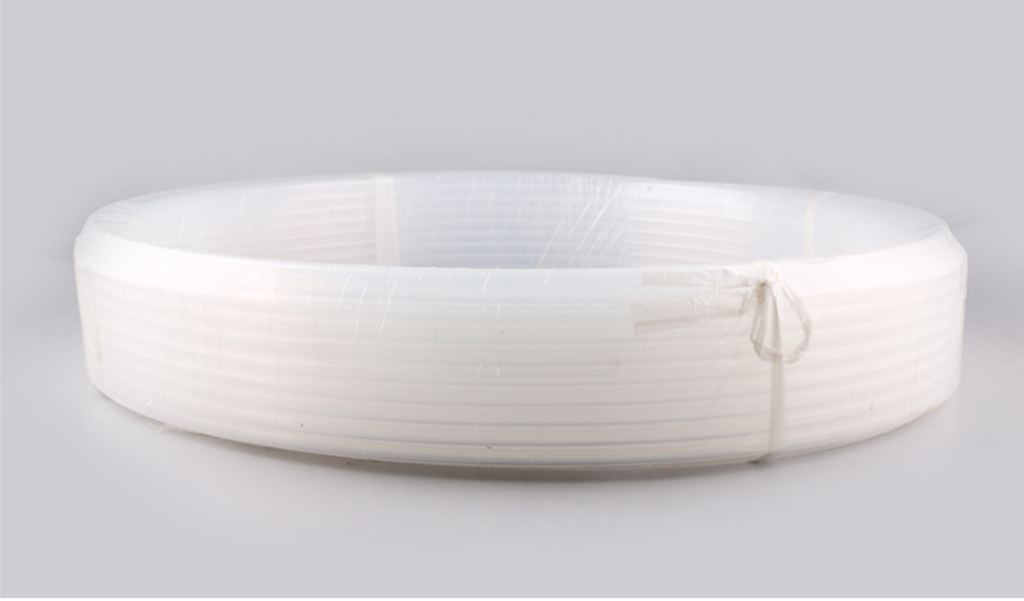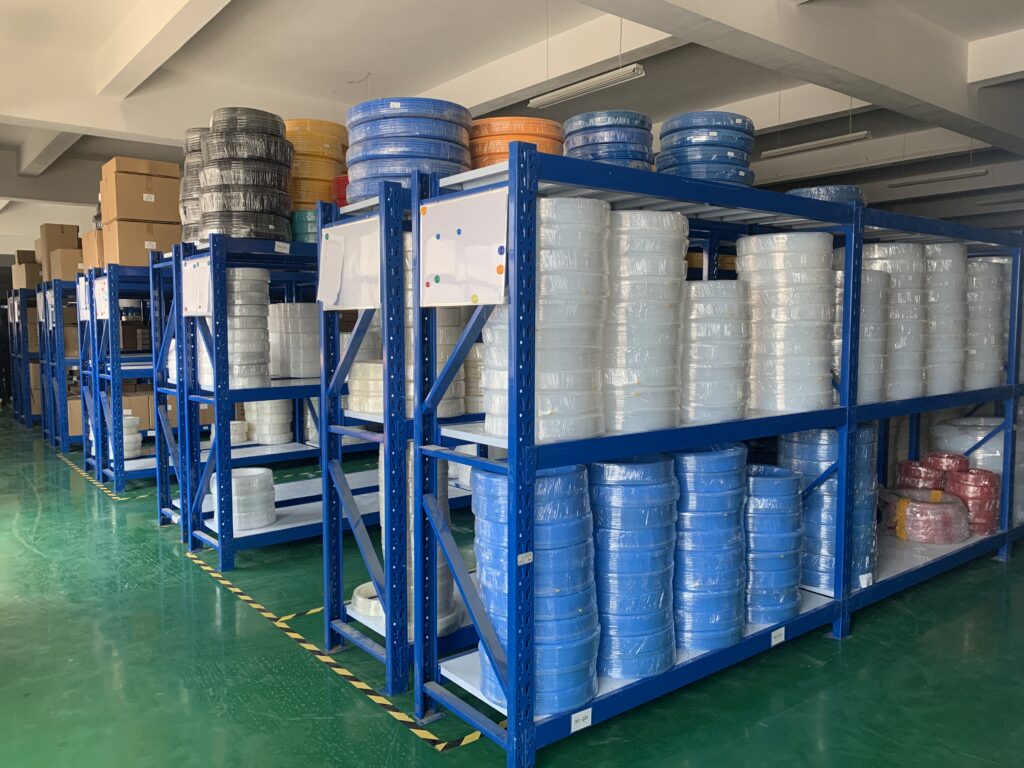When selecting materials for various applications, understanding the differences between High-Density Polyethylene (HDPE) and standard Polyethylene (PE) is crucial. Both materials are widely used across industries, but they possess distinct properties that make them suitable for different applications. This article provides a comprehensive comparison of HDPE and PE, helping you make informed decisions based on your specific needs.
Table of Contents
ToggleWhat is Polyethylene (PE)?
Polyethylene is a versatile thermoplastic polymer made from the polymerization of ethylene monomers. It is one of the most commonly used plastics in the world, known for its lightweight, durability, and chemical resistance. Polyethylene comes in several forms, each with unique properties:
1. Different Types of Polyethylene
- Low-Density Polyethylene (LDPE): LDPE is characterized by its low density and high flexibility. It has a branched structure that allows for greater flexibility and is commonly used in plastic bags, containers, and various packaging materials. While LDPE is less rigid than HDPE, it offers excellent impact resistance and is suitable for applications requiring bending and shaping.
- High-Density Polyethylene (HDPE): HDPE is known for its high strength-to-density ratio, making it suitable for demanding applications. It has a more linear structure compared to LDPE, resulting in greater rigidity and strength. HDPE is commonly used in products like bottles, piping, and plastic lumber.
2. General Properties of PE
Polyethylene, in general, is known for its excellent chemical resistance, low moisture absorption, and good electrical insulation properties. It is lightweight, durable, and can withstand a wide range of temperatures, making it suitable for various applications. However, the specific properties can vary significantly between different types of polyethylene.

What is High-Density Polyethylene (HDPE)?
1. Key Characteristics of HDPE
HDPE is a type of polyethylene that has a higher density than its counterparts, resulting in several key characteristics:
- Strength: HDPE is known for its high tensile strength, making it resistant to impact and stress. This property is crucial for applications that require durability, such as piping and containers.
- Chemical Resistance: HDPE exhibits excellent resistance to a wide range of chemicals, including acids, bases, and solvents. This makes it suitable for use in chemical storage and transportation, where exposure to harsh substances is common.
- Temperature Tolerance: HDPE can withstand higher temperatures compared to standard PE, making it ideal for applications that involve heat exposure. It maintains its structural integrity even under elevated temperatures.
- Low Permeability: HDPE has a low permeability to air and liquids, which is essential for applications like piping and containers that need to prevent leaks. This property ensures that the contents remain secure and uncontaminated.
2. Common Applications of HDPE
HDPE is widely used across various industries due to its robust properties. Common applications include:
- Piping: HDPE pipes are used in water supply, sewage systems, and air distribution due to their strength and resistance to corrosion. They are lightweight, easy to install, and can be joined using various methods, including heat fusion.
- Containers: Many household and industrial containers, such as milk jugs and detergent bottles, are made from HDPE because of its durability and chemical resistance. HDPE containers are often preferred for their ability to withstand impact and prevent leaks.
- Geomembranes: HDPE is used in landfill liners and other environmental applications to prevent leakage and contamination. Its impermeability makes it an ideal choice for applications that require environmental protection.
- Plastic Lumber: HDPE is also used to create recycled plastic lumber, which is resistant to rot and decay, making it suitable for outdoor furniture and decking. This application contributes to sustainability by repurposing plastic waste.
How Do HDPE and PE Compare?
1. Key Differences Between HDPE and PE
While both HDPE and standard PE are types of polyethylene, they differ significantly in their physical properties:
- Density: HDPE has a higher density (0.93-0.97 g/cm³) compared to standard PE (0.91-0.94 g/cm³), which contributes to its strength and rigidity. The higher density of HDPE results in a more tightly packed molecular structure, enhancing its mechanical properties.
- Strength: HDPE is stronger and more rigid than standard PE, making it suitable for high-stress applications. This strength allows HDPE to withstand greater loads and impacts without deforming.
- Flexibility: Standard PE is more flexible than HDPE, which can be advantageous in applications requiring bending or shaping. The flexibility of standard PE makes it suitable for applications like packaging, where movement and adaptability are essential.
2. Chemical Resistances
Both HDPE and standard PE exhibit good chemical resistance, but HDPE generally offers superior performance in harsh environments. HDPE can withstand exposure to a wider range of chemicals without degrading, making it the preferred choice for chemical storage and transportation. For example, HDPE is often used for tanks and containers that hold corrosive substances, while standard PE may not provide the same level of protection.
3. Cost Implications
Cost is always a consideration when selecting materials. Generally, HDPE tends to be more expensive than standard PE due to its enhanced properties and manufacturing processes. However, the long-term cost benefits of using HDPE—such as reduced maintenance and replacement costs—can outweigh the initial investment, especially in demanding applications. For instance, while HDPE pipes may have a higher upfront cost, their durability and longevity can lead to significant savings over time.

Which is Better for Specific Applications?
1. When to Use HDPE
HDPE is the preferred choice in applications that require high strength, durability, and chemical resistance. Some specific scenarios include:
- Water and Air Distribution: HDPE pipes are ideal for transporting water and air due to their strength and resistance to corrosion. They can be installed in various environments, including underground and above ground, without compromising their integrity.
- Chemical Storage: For industries that handle hazardous materials, HDPE containers provide the necessary protection against leaks and spills. The chemical resistance of HDPE ensures that the contents remain safe and uncontaminated.
- Heavy-Duty Applications: In construction and industrial settings, HDPE is often used for products that must withstand heavy loads and harsh conditions. Its strength and durability make it suitable for applications like industrial pallets and storage bins.
2. When Standard PE is More Suitable
Standard PE may be more suitable in applications where flexibility and cost-effectiveness are prioritized. Examples include:
- Packaging: LDPE is often used for flexible packaging materials, such as plastic bags and wraps, where flexibility is essential. The lightweight nature of LDPE makes it ideal for applications that require easy handling and transport.
- Low-Stress Applications: In situations where the material will not be subjected to high stress or harsh chemicals, standard PE can be a cost-effective choice. For example, standard PE may be used for non-critical components in consumer products.
Environmental Considerations
1. Impact on the Environment
Both HDPE and standard PE are recyclable, but their environmental impact can vary based on their applications and disposal methods. HDPE is often recycled into new products, reducing waste and promoting sustainability. However, improper disposal can lead to environmental pollution, as plastic waste can persist in the environment for hundreds of years.
2. Best Practices for Disposal and Recycling
To minimize environmental impact, it’s essential to follow best practices for disposal and recycling:
- Recycling Programs: Participate in local recycling programs that accept HDPE and PE products. Many communities have specific guidelines for recycling plastics, and following these can help reduce landfill waste.
- Proper Disposal: Avoid littering and ensure that plastic products are disposed of properly to prevent environmental contamination. Educating others about the importance of proper disposal can also contribute to a cleaner environment.
- Educate Others: Raise awareness about the importance of recycling and proper disposal of plastic materials in your community. Encouraging responsible behavior can lead to a more sustainable future.
Conclusion
In conclusion, the choice between HDPE and standard PE depends on the specific requirements of your application. HDPE offers superior strength, chemical resistance, and durability, making it ideal for demanding environments. On the other hand, standard PE provides flexibility and cost-effectiveness for less demanding applications. By understanding the differences and considering your specific needs, you can make an informed decision that enhances the efficiency and reliability of your projects.
If you have any questions or need expert advice on selecting the right materials for your applications, feel free to reach out.

